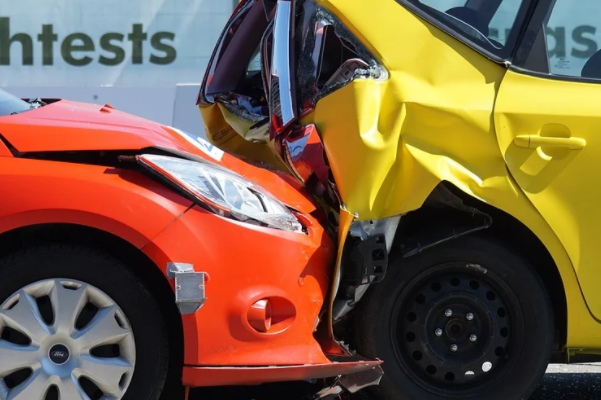 No matter the industry you venture into, there is no doubt that it has its own set of jargon. Many key terms are unique and varied.
No matter the industry you venture into, there is no doubt that it has its own set of jargon. Many key terms are unique and varied.
When you buy car insurance, you will likely come across terms that intimidate you. Luckily, you’re not alone in feeling like you need a crash course on insurance language.
As you request car insurance quotes, it’s important to get a basic understanding of what you are getting into before insuring yourself and your car. To get you started on your auto insurance literacy journey, here is a list of common terms to understand:
Agreed Value
This refers to the specific amount that you and your insurance provider agree to insure your car for. When your insured car is lost or damaged, the agreed value is the amount paid back to you.
Auto Liability Coverage
This is also known as auto liability insurance. Auto liability coverage is either required or optional. Make sure to check your state’s laws to find out if you need to get this coverage. Think of it as protection after getting into car accidents that render you in charge of damages. This kind of coverage comes in two forms:
- Property damage liability covers costs linked to losses and damages on another person’s property caused by the accident.
- Bodily injury liability covers costs linked to harm or injury to people caused by the accident.
Classic Car Insurance
This type of coverage will provide you with insurance to help protect your high-value car. Although classic car types vary, your vehicle is of high value when it’s at least 20 to 30 years old. Past restorations and customizations may add more value to the car, so the cost for damages, losses, or repairs may go beyond standard car insurance limits. This special policy covers the insured vehicle for an amount agreed to by you and your insurance provider.
Collision Coverage
This is an optional form of insurance. It pays you back if your insured car is damaged after colliding with another vehicle or object, such as a tree or pothole. Read up on your local traffic laws to see if this type of coverage is mandated. There are exceptions to this, including car engine failure or decline. For coverage on damages to another person’s vehicle, property damage liability may cover the costs.
Comprehensive Coverage
This is another form of optional insurance for car damage or loss due to a fire, natural disaster, vandalism, theft, or another cause besides collision. The coverage depends on several factors, such as your car’s current value.
Declaration Page
This is also commonly known as an auto insurance coverage summary. The declaration page lists all crucial info, including:
- personal details (full name, address, and description of insured car)
- tenure of your coverage as a policyholder
- limits of each coverage you acquire
- costs
- other info your insurance provider may need
Deductible
A deductible is an expense you consent to pay in the event of auto loss or damage. Think of it as an “on-hand” payment of a specific amount set by you and your insurance provider. Your costs on collision and comprehensive coverage are lower when you set a higher deductible.
Distracted Driving
Another crucial term every driver should be aware of is distracted driving. It greatly affects insurance rates. Lifestyle choices leading to distractions or violent behavior behind the wheel increase the risk of accidents and traffic violations. You may get a citation or get a rocky driving record. Such acts on the road can lead to higher insurance rates.
Make sure to obey traffic rules at all times. This is one way you can reduce your premium when owning a policy.
Limits
This refers to the highest level of protection you’ll get when you insure your car. When buying coverage, you’ll often see the numbers 25/50/15 on the declaration page. Each number represents your limits (in thousands) for bodily injury and property damage liability in the event of an accident.
Premium
This refers to the amount you pay your provider, often on a monthly or bi-annual basis. Your insurance provider will ratify the coverages outlined in your policy once the premium is paid. The price depends on the type of coverage you will get. Premium rates will rise if you get more comprehensive coverage.
Improve Your Insurance Literacy
A better grasp of the fine print starts with the basics. Don’t let complex car insurance terms intimidate you. Improve your insurance literacy more by asking your chosen insurer to explain terms for you. Your insurer can review your summary or suggest alternatives if you are on a budget. Doing so leads you one step closer to getting the policy that meets your needs and budget.
Sources:
https://www.iii.org/article/auto-insurance-jargon-buster
https://www.nationwide.com/lc/resources/home/articles/insurance-glossary
https://www.cimaworld.com/wp-content/uploads/2018/04/Know-Your-Insurance-Common-Auto-Insurance-Terms-1.pdf
https://www.allstate.com/tr/car-insurance/components-auto-insurance.aspx
http://www.rmiia.org/auto/steering_through_your_auto_policy/Glossary_of_Auto_Terms.asp
Become a Harlem Insider!
By submitting this form, you are consenting to receive marketing emails from: Harlem World Magazine, 2521 1/2 west 42nd street, Los Angeles, CA, 90008, https://www.harlemworldmagazine.com. You can revoke your consent to receive emails at any time by using the SafeUnsubscribe® link, found at the bottom of every email. Emails are serviced by Constant Contact








